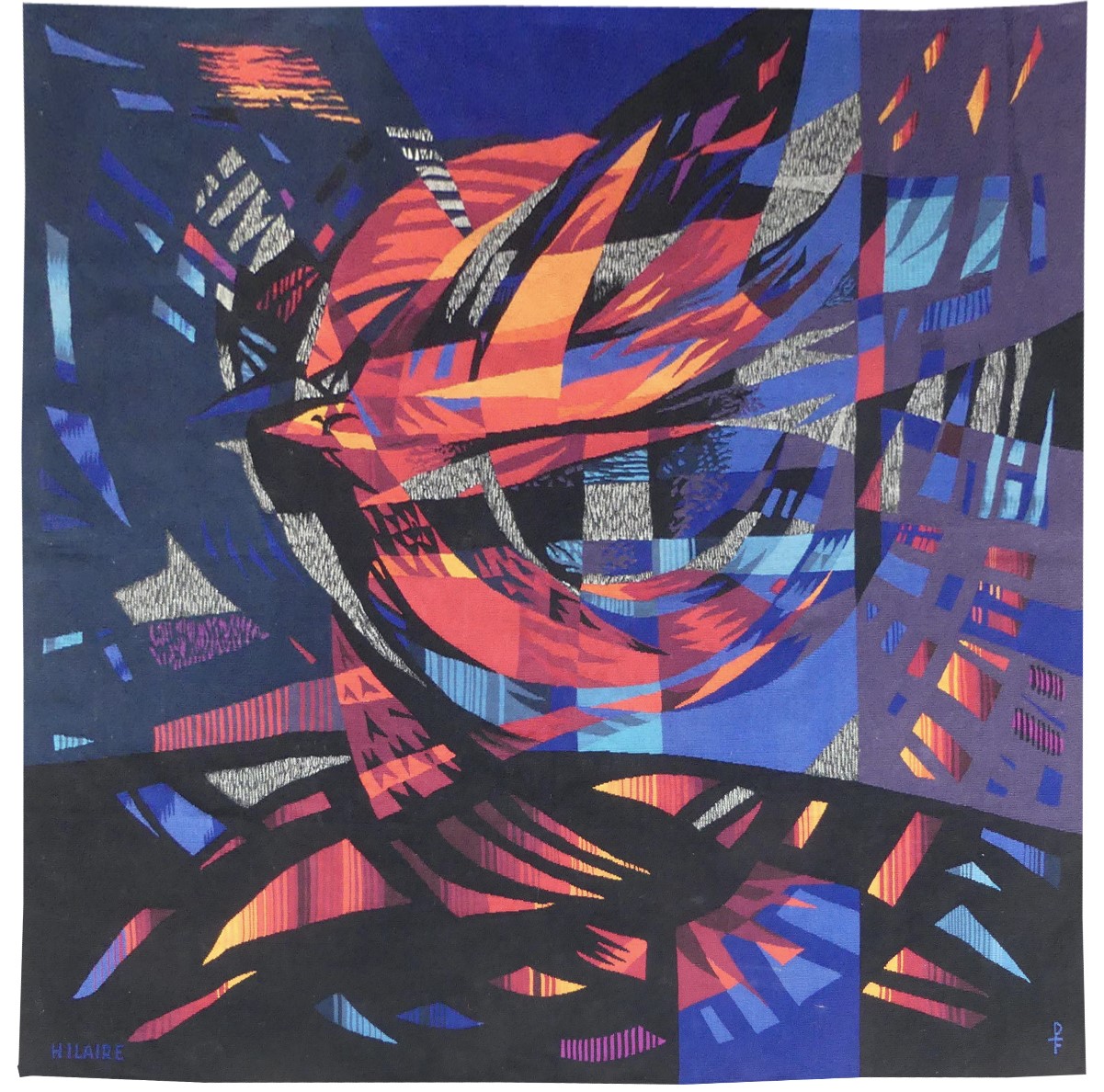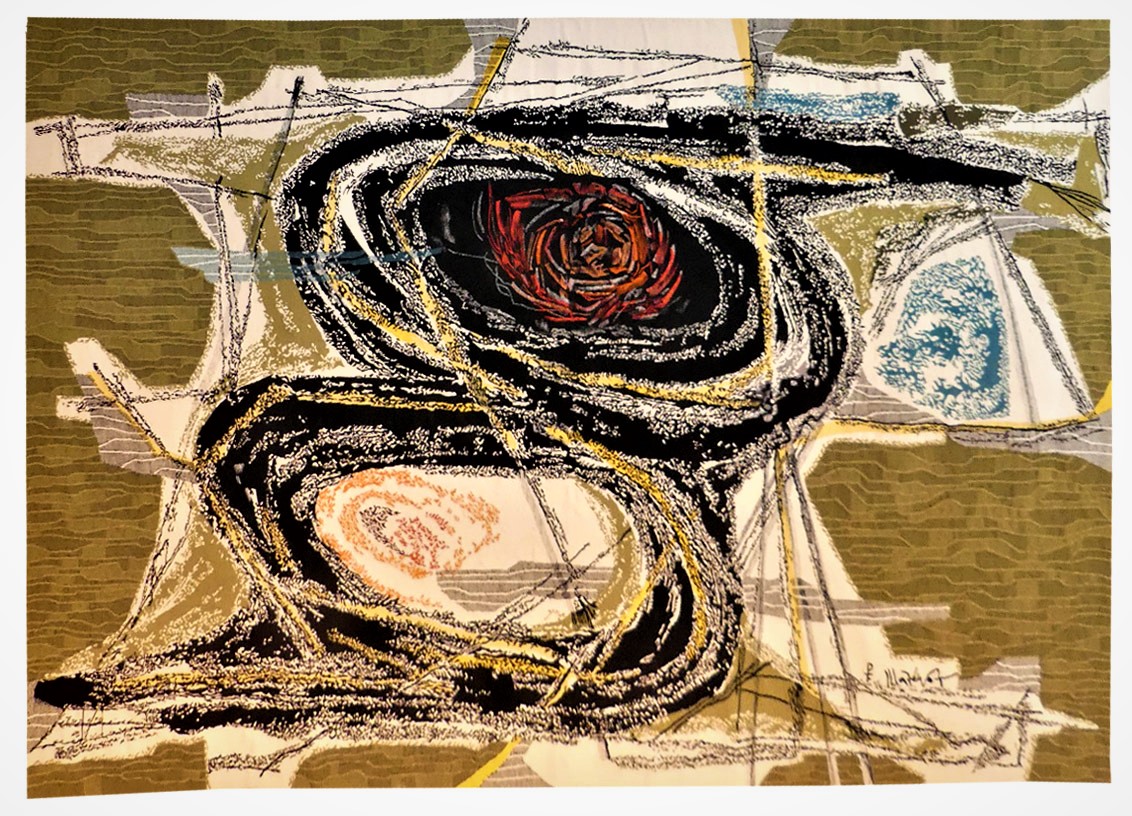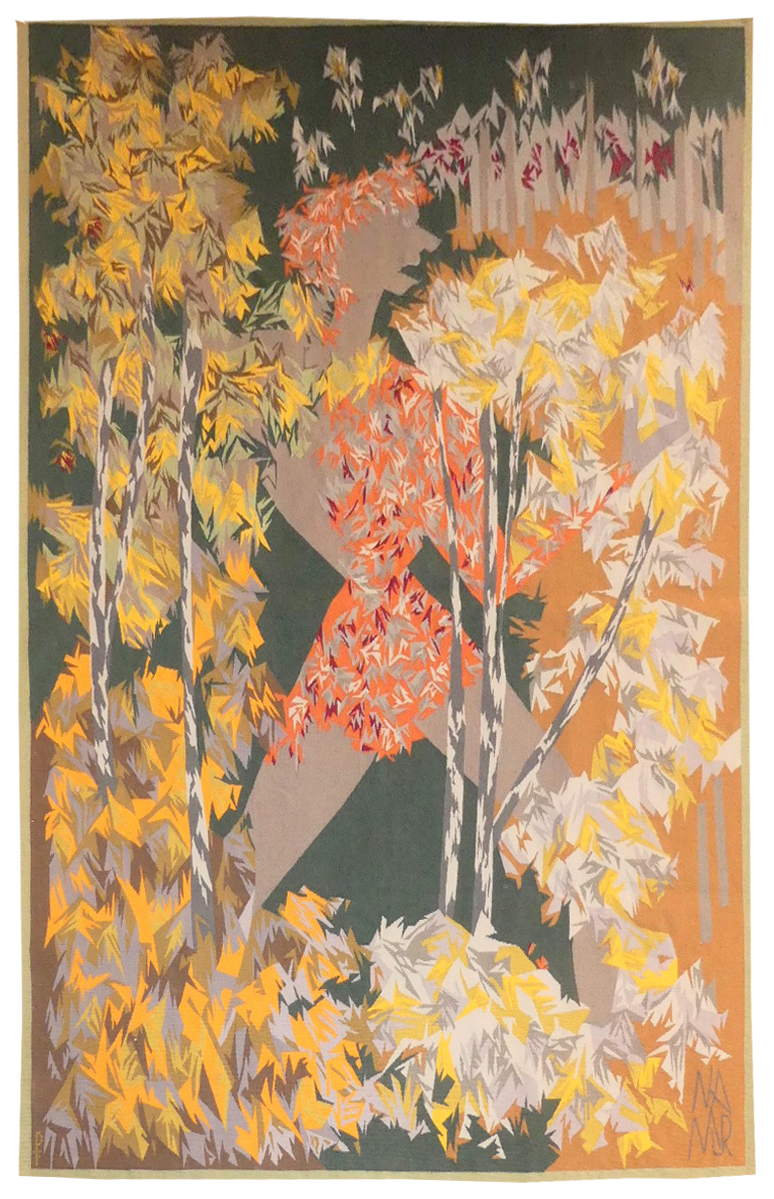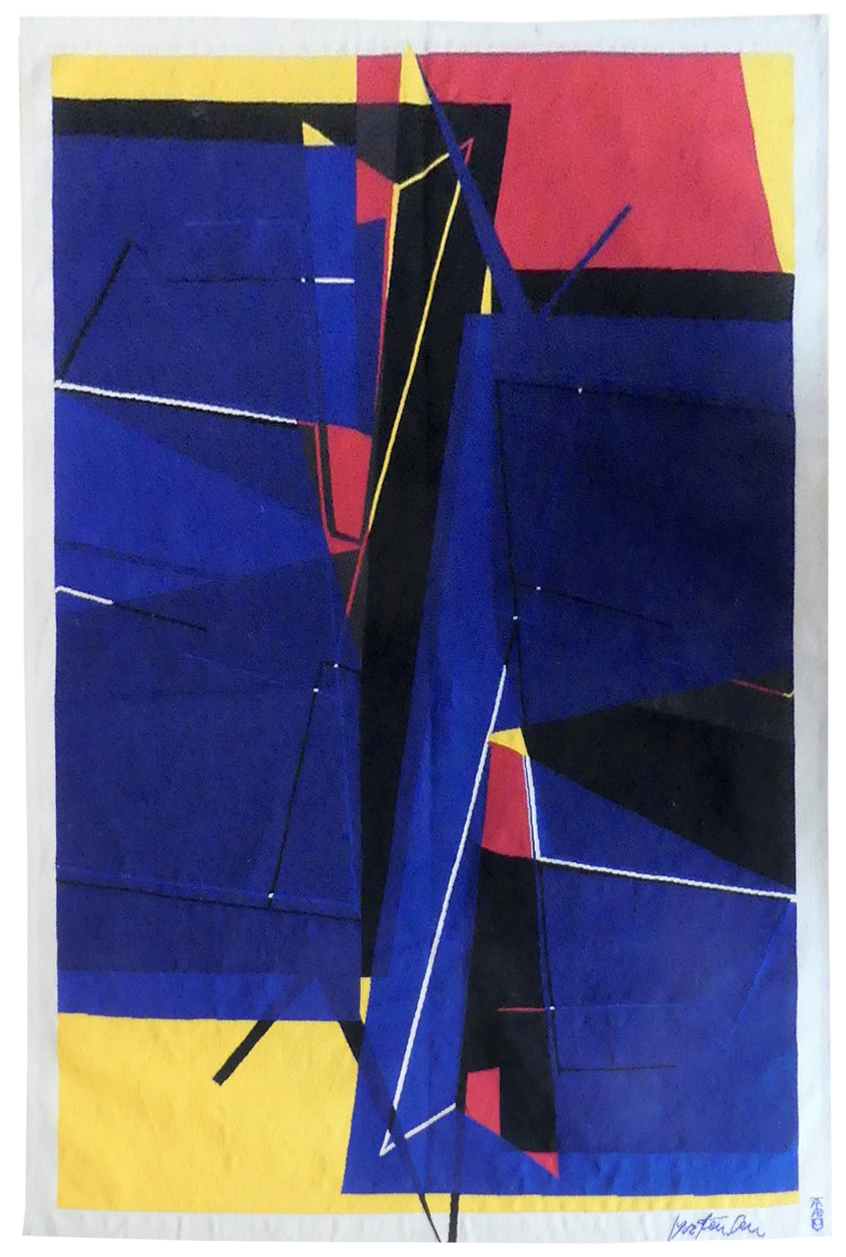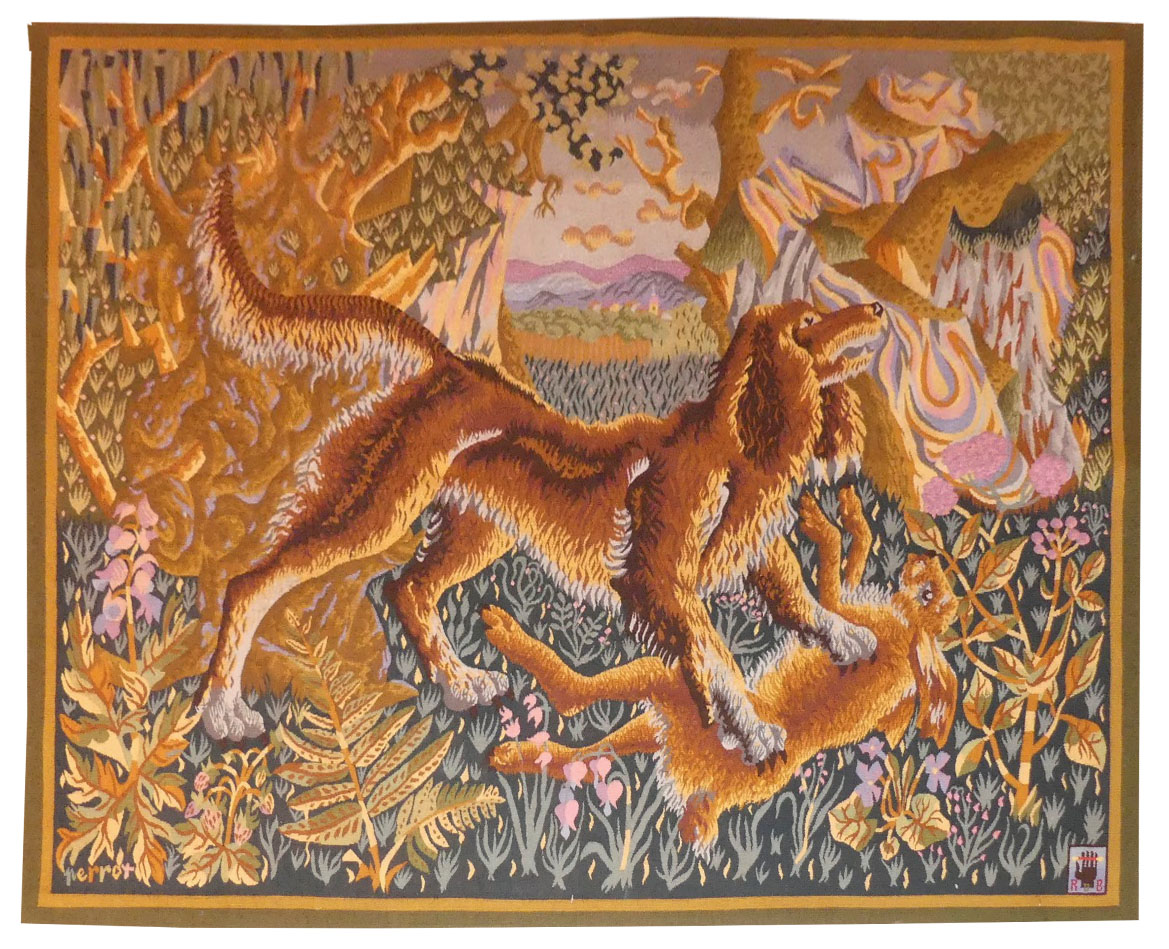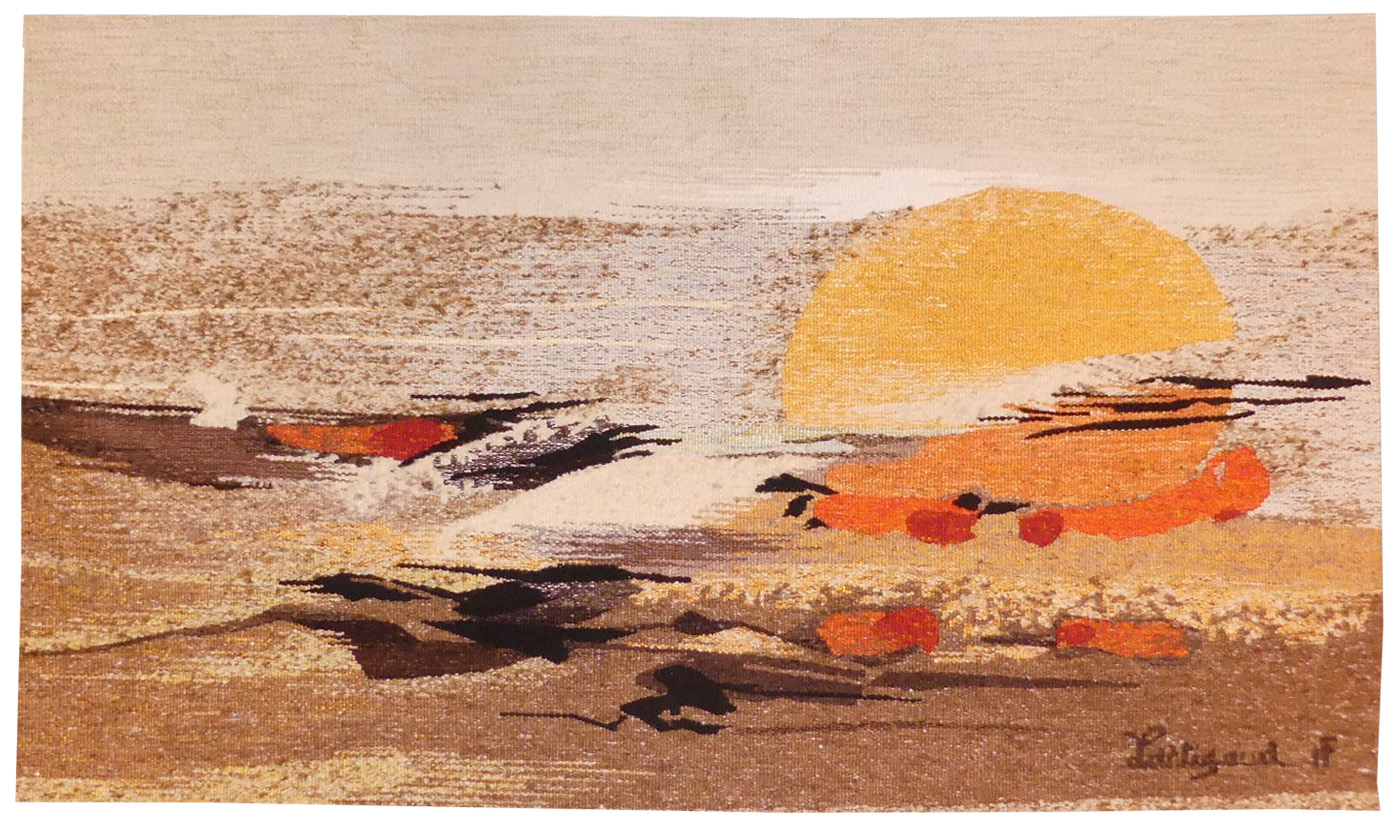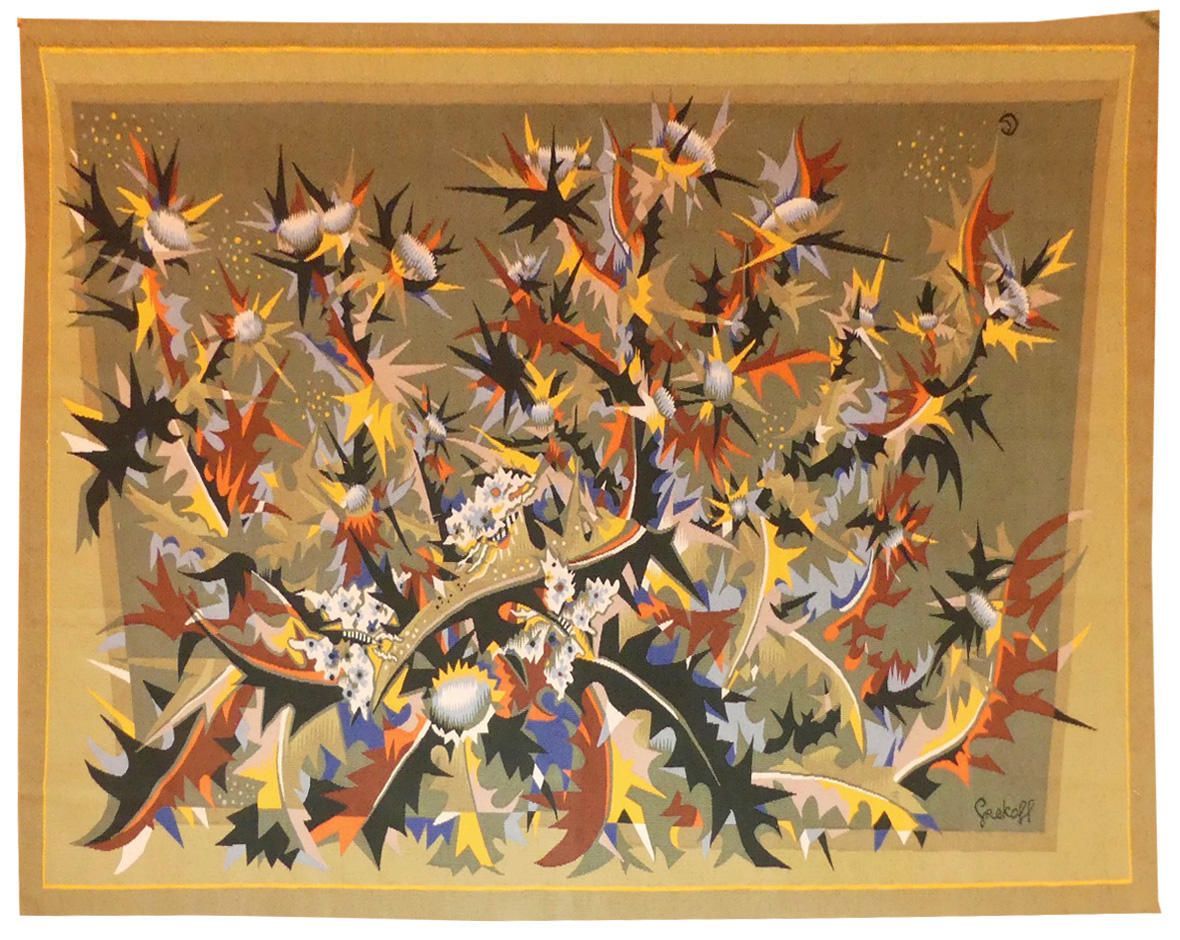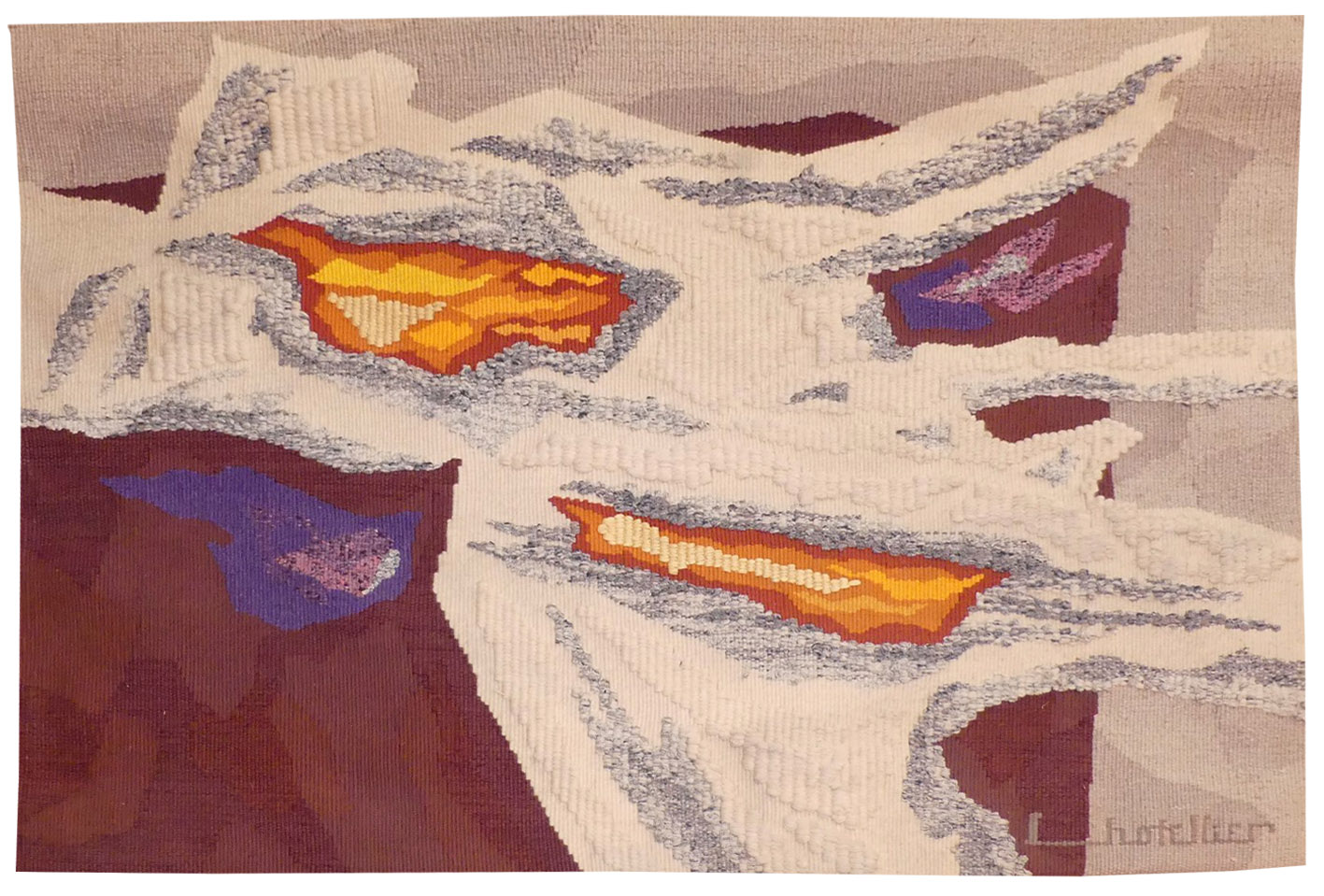-
L’oiseau de feu (the firebird)
Aubusson tapestry woven in the Pinton workshop. With signed label. 1963. With a taste for the large-scale, influenced by Untersteller at the Ecole des Beaux Arts, Hilaire undertook numerous mural paintings. In the same vein, beginning in 1949, along with a number of other artists stimulated by Lurçat, (he would join the latter at the A.P.C.T. Association des Peintres-Cartonniers de Tapisserie) he designed a number of cartoons some of which were woven at Beauvais or at Les Gobelins. “L’oiseau de feu » is a rare example of the dynamic in works by Hilaire who has accustomed us to more static subjects like hothouses and forest scenes : his rather fragmentary and kaleidoscopic style is however admirably suited to conveying the idea of movement. Bibliography : Exhibition catalogue Hilaire, œuvre tissé, galerie Verrière, 1970, ill. Exhibition catalogue, du trait à la lumière, Musée Départemental Georges de la Tour, Vic-sur-Seille, 2010. -
Aubusson tapestry woven by the Pinton workshop. With signed label, n°2/6. 1960.
-
Composition
Little is known about the artist, but she created a number of cartoons, which would be woven in the 60’s by Tabard and Pinton.Aubusson tapestry woven by the Pinton workshop. With label. Circa 1965. -
Saint-Mars (composition blues black yellow red white)
From early on in his career, Mortensen, favoured an abstract painting style. He settled in Paris in 1947 and showed his works, with other artists also inclined to geometric abstraction, at the Denise René gallery. In 1952 under the aegis of François Tabard and Vasarely an exhibition titled « 12 original tapestries » opened at the gallery where, in the company of Le Corbusier and Léger, there appeared works by Deyrolle, Taueber-Arp and Mortensen who thus became the first abstract painters to be reproduced in tapestry and a new art form was born (in this context, it must not be forgotten that this is the period where the “Lurçat style” was absolutely dominant) which Gilioli, Matégot and Tourlière will all subsequently claim as their own. Mortensen’s collaboration with the “René-Tabard tapestries” will last until 1968, even though he returned to his native Denmark in 1964. The 14 works of the artist which will be woven are characterised by his large-scale geometrical compositions, using bright, light and contrasting colours in large expanses of colour, which the weavers of the Tabard workshop reproduce with great success. « One of the loveliest » of Mortensen’s tapestries according to Valentine Fougère (Tapisseries de notre temps, Paris 1969), « Saint Mars », a somewhat obscure title, derives directly from an engraving from 1962. The style which is wholly geometric, consisting of blocks of primary colour and surrounded by a frame, is characteristic of this artist’s style in the years 1961-2. This model, which was to be found both at the Mobilier National (bought from the Denise René gallery in 1963) and also at the Cité de la Tapisserie in Aubusson, was woven in 2 sizes : the dimensions of this copy correspond to that mentioned in the Cité. Origin : Denise René collection Bibliography : Madeleine Jarry, la Tapisserie, art du XXe siècle, Fribourg, 1974, ill. n°145 Exhibition catalogue, Aubusson, la voie abstraite, Aubusson, Musée départemental de la Tapisserie, 1993, ill. p.14 (on a photograph of a 1964 exhibition at the Denise René gallery) p.32 Acts of the colloquium, la tapisserie hier et aujourd’hui, Paris, 2011, ill. n°6 p.213 Visitor’s guide, nef des tentures, Cité internationale de la Tapisserie, Aubusson, 2016, ill. p.84Aubusson tapestry woven in the Tabard workshop.. With label. 1963. -
La mort du lièvre (the hare's death)
Aubusson tapestry woven by the Rivière des Borderies workshop. 1946.Perrot began his career as a cartoon designer at the end of the war, making almost 500 cartoons including numerous commissions from the state, most of which were woven at Aubusson. His style which is particularly rich and decorative is eminently recognisable : a crowd of butterflies or birds, most often, stands out against a background of vegetation, reminiscent of the millefleurs tapestries (which would also inspire Dom Robert). One of Perrot's earliest tapestries, contemporary with ‘La chasse au renard’ (‘The Fox Hunt’) which featured in the seminal 1946 exhibition, our carton bears witness to Perrot's early inspiration: a taste for Nature, animals, an interest in botany, geology and inhabited landscapes (man is absent here, but he lives in the village, he hunts)... The artist-ethnographer recycled in tapestry the observations made for the Museum of Popular Arts and Traditions during the war. Bibliography : Tapisseries, dessins, peintures, gravures de René Perrot, Dessein et Tolra, 1982, reproduced p.83 Cat. Expo. René Perrot, mon pauvre cœur est un hibou, Aubusson, Cité de la Tapisserie, 2023 -
Oiseaux (birds)
Edmond Dubrunfaut can be considered as the great 20th century renovator of the Belgian tapestry tradition. He founded a weavers’ workshop in Tournai as early as 1942, then, in 1947, created the Centre de Rénovation de la Tapisserie de Tournai. He produced for various Belgian workshops (Chaudoir, de Wit,...) numerous cartoons destined notably to adorn Belgian embassies throughout the world. Moreover, Dubrunfaut was a teacher of monumental art forms at the Academie des Beaux-Arts de Mons from 1947 to 1978 and then, in 1979, contributed to the creation of the Fondation de la tapisserie, des arts du tissu et des arts muraux de Tournai, a veritable heritage centre for the art of the tapestry in Wallonie. His style, characterised by figuration, strong colour contrasts, draws direct inspiration from nature and animal life (as with Perrot, for example, this artist has a net predilection for birdlife). A classic subject for Dubrunfaut, woven in Aubusson by Simone André in the 50s and 60s. Bibliography : Exhibition catalogue Dubrunfaut et la renaissance de la tapisserie, tableaux, dessins, peintures, Musée des Beaux-Arts de Mons, 1982-1983.Aubusson tapestry woven by the Simone André workshop. Circa 1950. -
Composition
Aubusson tapestry woven in the Four workshop. N°EA2/2. Circa 1980.A former student at the ENAD in Aubusson, Lartigaud created his first tapestry cartoon in 1968. He went on to design hundreds more, most of them woven by the Four Workshop, in an abstract style occasionally studded with celestial bodies. -
Chardons aux papillons blancs (Thistles with white butterflies)
Elie Grekoff, whose aesthetic is similar to that of Lurçat, designed over 300 cartons until the early 1980s. Here we find the sharp shapes typical of tapestry in the immediate post-war period. Note the motif which, amusingly enough, goes beyond the border-frame.Aubusson tapestry woven by the Caron workshop. With signed label, n°EA. Circa 1970. -
Roc neige (rock snow)
Tapestry woven by the L.M. workshop in Calais. With signed label, n°EA1. Circa 1970.A glassmaker (he designed many stained glass windows for public buildings, particularly in the Boulonnais region), engraver, painter and photographer, Lhotellier had many strings to his bow. Typical of his work from around 1970, our tapestry bears witness to the existence of little-known weaving workshops capable of accomplished creations, far from what was being done in Aubusson at the time.



